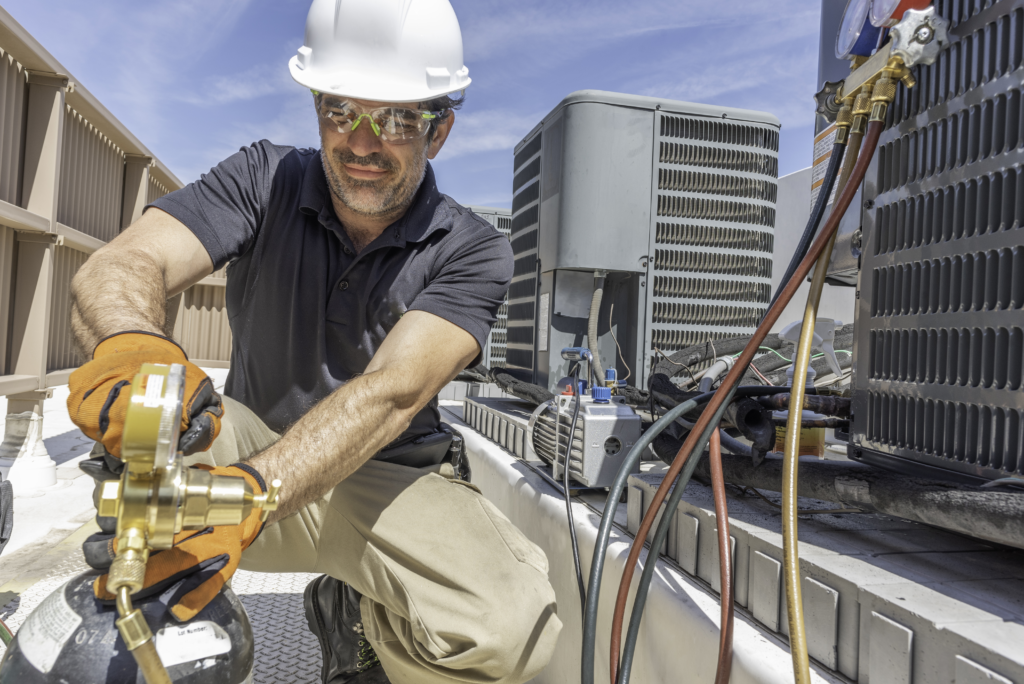
Original article by Karen Martinez, CCAM, CAMEx. Published in a revised version as Perspectives – Factoring Costs of COVID-19 in the January/February 2021 issue of Common GroundTM magazine, the flagship publication of Community Associations Institute (CAI).
With over a year of the pandemic behind us, experts have significant insight into the COVID-19 cost increases to HOA communities. The doubling of residential occupation has had foreseeable effects on communities’ onsite components, operating budgets and reserves, management services, and property vendor services. Further, if global analysts are correct, most of the world’s working population will transition from the brick and mortar workplace to a permanent, new-normal remote workforce.
Remote Management of the HOA. Professional HOA management companies have always operated as a remote workforce from an office. Professional management companies whose staff are now working remotely from their homes have all the tools in place to fully meet the needs of both the corporation and the community’s residents. Virtual HOA board meetings are now the norm. New technologies and close monitoring of employee productivity produce more transparent reporting for boards and residents. Expanded access to personal accounts and HOA records gives residents more autonomy and control. Physical property inspections and onsite work are performed within health and safety protocols.
Safeguarding the HOA as a multi-family residence is critical. It requires finessing expenditures and savings against operating budgets and maintaining sufficient reserves to fund capital projects. Sustainable HOA operations require accurate planning, and planning is largely based upon the reliability of budgets and reserve studies. The Davis-Stirling Act requires HOAs to conduct a reserve study every three years to help boards plan the HOA’s projected spending needs. The COVID reality now compels boards to anticipate spending increases.
Re-allocation. Any budgeting or reserves miscalculation from unforeseeable events – such as the COVID pandemic, can easily result in underfunded budgeting forecasts that will pose challenges for both the HOA corporation and its residential community.
A sufficient period of time hasn’t yet passed to predict the effects of a long-term COVID impact on HOAs. However, the effect of sustained, increased resident occupancy is likely to shorten the lifespan of some HOA components and systems. Thus, an HOA with a pre-COVID reserve study that projected a mechanical system replacement at 10 years may be confronted with unanticipated expensive repairs or replacement much sooner than is forecast in reserve allowances.
Further, costs of property-related services and some supplies increased in 2020, and services are projected to rise again in 2021. Experts are uncertain whether an extended economic shut down will occur, but if it does, the HOA’s current operating budget and reserves may not anticipate these increases. Assuming a larger workforce is working from home after COVID ends, that increase could have varying degrees of impact in multi-family facilities.
Awareness of the trending COVID-19 impact on HOA communities and on the services that support them will help boards and management companies more realistically forecast a property’s future expenses. Reassessment of budget and reserve component projections may by prudent, and may warrant re-allocation of budget items and reserve amounts based on the worst case scenario.
COVID-19 Impact on HOA Communities in 2020
Heightened Usage. In California, the Governor’s shelter-in-place order forced residents from their workplaces into their homes. This doubled Association residential usage rates from roughly 40% pre-COVID to rates of up to 80% across the nation. HOAs thus required more management services. There is heightened strain on association amenities, systems, and components, including increased maintenance and cleaning services, waste removal, and utilities, as well as more wear and tear on communal resources.
Usage trends that evolved over the summer months show signs of continuing into 2022 or beyond in these critical areas:
Sanitation “Residential waste volume has increased between 5% to 35%, depending on the location, as Americans have been staying home and generating more trash and recyclables.”
Plumbing “Stay-at-home orders and business shutdowns can have knock-on effects, affecting building water quality, customer water bills, utility revenue, and water and wastewater operational conditions.”
Home Energy Use “…upticks for residential demand are far outweighed by reductions in commercial and industrial operations.”
Management Services. In mid-March of 2020 the Governor of California designated HOA property management companies as essential services. Property management companies were required to disperse their workforces just like other businesses. Essential service providers literally turned their businesses from ‘inside to out’ to comply with health and safety mandates inside their business and equip outside workers in the field.
During the compliance transition, property management companies had to step up service efforts to twice the number of stay-at-home residents. Shelter-in-place orders widely impacted HOA communities, their management companies and property vendors, and the costs of increasingly limited materials and supplies soared.
Property management companies that had cloud-based technologies, newer property management software, and protocols in place for managing a remote workforce, were able to instantly transition their portfolios to serve their HOA clients and comply with local shut-down mandates.
Property management companies lacking the technological resources or protocols for managing a remote workforce to serve their customer base had to dramatically reduce services during a critical period when residents were in the most need of additional support.
Property management companies that overcame transition challenges stepped up operations to meet extra demands from increased resident occupation. Associations required more management services, thus resulting in general cost increases in contracted management hours to meet doubled service demands.
Anticipating the Post-Pandemic Reality
Residential Workforce. Global Workplace Analytics projects that 56% to 62% of the global workforce is working from home, and an estimated 80% want to. Global and national studies predict up to 62% – or three in five, of remote workers will continue working from home after the pandemic ends. The pandemic and emerging technologies have significantly changed where and how work will be performed in the future. While this trend should have very little impact on the quality of management services provided to most communities, there will be some impact through increased business costs, as well as greater strain on the community’s infrastructure and components.
Association Costs. Sustained, higher residential occupation and facility use will impose additional strain on HOA mechanical systems and components, reducing projected lifespans. Numbers from the last six months estimate a 40% to 60-65% increase in the need for maintenance repairs. This is primarily due to the double impact of use by HOA residential populations in facilities and on systems and deferred repairs during COVID. Budgets and reserves may need adjustments to accommodate increased costs for more maintenance repairs or earlier replacement of critical components.

“With more people being at home due to lock downs and closures, it is expected that wear-and-tear items will need attention more frequently than under normal circumstances.”
MRI | Blog July 9, 2020 | Multifamily maintenance and make-ready costs in the age of COVID-19
Management Costs. Boards should anticipate possibly significant contract increases to management base fees and to property-related services in 2021 due to pandemic stressors, and based on projected rising costs of doing business in 2021.
Property Services and Materials Costs. Associations should anticipate it likely will pay increased costs for services and materials. The costs of doing business increased globally, compounded by the reduced production of supplies due to COVID. Some portion of these business cost increases will be passed on to consumers. More scarce and expensive supplies and materials, safety gear needed to protect workforces in public, the implementation of new technologies and equipment to manage remote workforces and augment service methods, have all taken a toll on businesses struggling to meet a bottom line.
In California, for example, regular and unforeseen COVID increases projected for 2021, including costs absorbed by private sector employers in 2020 include:
- Wage increases in 2021 to minimum wage rate of $14 per hour (7.69%), plus the 2020 minimum wage rate increase to $13 per hour (8.33%).
- Annual inflation rate increase in 2021 to increase to 2.24%, on top of the increase in 2020 of .62%.
- Employer premiums increase in 2021 to employee benefit costs of 4% to more than 40%.
- New sick pay policies in 2021 increased costs to the employer burden.
- Cost of living increase in 2021 at a rate of 1.1% (and here).
- Building materials may return to pre-COVID levels in 2021, with an increased cost of 13% in Q2 2020.
- New technologies spending increase of 5% annually, 2021 through 2023, with a 16% increase in 2020.
- Mandated personal protective gear was a 1,500.0+% new cost in 2020 for private sector employers.
While companies can’t expect to pass all of the above costs on to their clients, some percentage of costs must be recovered in order for HOA service providers to remain operational. This factor is particularly relevant in comparing value for services in aging communities that require more attention and use of management resources than newer properties.
Making Lemonade In the New Normal

Leverage Opportunities. These months of pandemic shut-down reveal a unique opportunity for HOA Boards to implement savings and other programs beneficial to their communities. Residents who are living and working at home with more flexible schedules are more inclined to volunteer in programs such as Neighborhood Watch. With an increased resident population it’s important that Boards act to protect property and residents.
Another opportunity for Boards is to use this period to fully reassess the state of the HOA’s infrastructure. Now is the time to create a proactive maintenance plan to improve property market values. A key consideration in planning is to recognize that residents are confined to community living spaces now more than ever before. Sensitive Boards can prioritize the enhancement of residents’ quality of life during COVID with aesthetic improvements that also increase curb appeal.
Global Workplace Analysts and the majority of experts predict that at least three in five workers will work from home, post-pandemic. HOA Boards and management must begin now to assess, predict, and plan how their communities will manage the a new-normal reality that has already begun. Whether to a greater or lesser degree, the fact is that the pre-COVID planning HOAs relied upon is no longer reliable.
Further, HOAs may soon have to distinguish clearly in governing documents the differences between at-home workers and displaced at-home businesses working out of their communities. While employees are allowed, private businesses are typically prohibited from operating in a residential community.
While we can’t foresee to what extent COVID will leave its indelible mark on our professional and societal habits, the COVID new-normal is teaching us to anticipate, prepare for, and leverage any outcome. More simply put, we can decide to make lemonade out of lemons.
